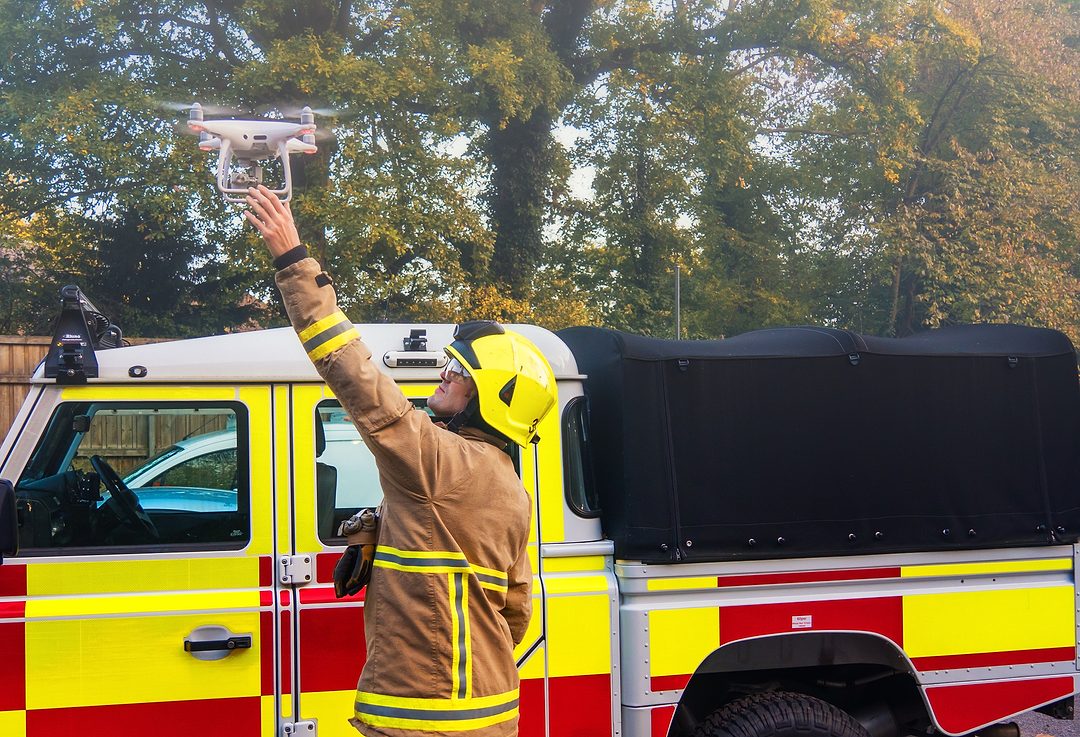Planning for Wildfires
What are we outrunning?

In the summer of 2021, the western half of the United States is in a nervous state of wildfire anticipation. It is the hottest, driest summer we have seen in decades west of the Rocky Mountains (https://bit.ly/3jUHlon). How do we prepare to minimize the damage of inevitable wildfires?
“Drought now encompasses 90 percent of the western US with more than half of the region in the highest two categories of drought,” notes a report from the National Interagency Fire Center. The report lists El Nino (above-average surface temperature of the Pacific Ocean) and sustained drought as contributing factors to elevated concern (https://bit.ly/3yIkClH).
One of the annual heated debates in the western states is whether communities should start their own fires. Grist.org explains: “Although the idea of fighting fire with fire may seem counterintuitive, controlled burns — coupled with forest management tactics such as thinning and grazing to remove excess vegetation — can reduce the size and intensity of fires by up to 76 percent.” (https://bit.ly/3CHGtfp)
There is complexity to wade through with these burns.
“State and federal officials haven’t always supported the practice,” Grist continues. “When a series of deadly fires erupted across the country in 1910, the U.S. Forest Service focused on total suppression, a policy that discouraged even small controlled burns and filled the nation’s woodlands and wilderness with tinder. The agency reversed course in the 1970s after research proved that fire plays a vital role in forest ecology.”
The Nature Conservancy, co-founded by Yurok tribe member Margo Robbins, teaches firefighters to effectively use controlled burn techniques. The Prescribed Fire Training Exchange (TREX) classes they teach have an impressive track record over many generations in the Northern California area.
According to The Nature Conservancy website, controlled burn techniques have been intentionally practiced by indigenous people around the globe for thousands of years. The website further explains: “For the Yurok, Karuk and Hoopa Tribes of Northern California, human-managed fires across their traditional lands are vital. They promote the growth of traditional food sources, like acorns, and basket-weaving materials, like hazel. The fires even support the life cycles of salmon.”
Controlled burns also can be wildly unpopular, depending on local history. In the last 20 years, some controlled burns quickly became uncontrollable and destroyed property in the process. If you or your neighbor lost a home to a controlled burn, you might be slightly or vehemently against starting fires to prevent potential future fires.
The balancing act of protection versus unnecessary destruction is thin. In 2012, the Colorado State Forest Service initiated a fire intended to clear overgrown forest near the Platte River. Unfortunately, the wind picked up and the fire spread far beyond the planned area. As a result, 23 homes were destroyed and three people lost their lives. Most western communities could likely name areas nearby that were in the path of an uncontrolled burn.
Urban sprawl vs. defensible areas
Perhaps the underlying issue is not about controlled burns. Cities are growing faster than we are able to manage the forests to minimize catastrophic burn potential.
“Each year, more people move into the so-called wildland-urban interface,” Outside Magazine reports (https://bit.ly/3xCjNte). “Ten million new homes were built in these exurban areas between 2000 and 2010; over 30 percent of America’s housing stock is now in the wildland-urban interface areas.”
Firefighters call a clear area between forests and buildings a defensible area. If building outpaces the boundary between the wildlands, it becomes harder to keep the forest away from the houses.
In the past, Margo Robbins' Yurok ancestors conducted controlled burns, then lived in areas that were at lower risk of explosive fire. Today, roughly five million people between Boulder and Pueblo, Colo., are essentially fighting for housing space closer to the wildland-urban interface.
The boundary is the draw, in the same way that desirable beachfront real estate is at higher risk for hurricane damage. Unless a natural disaster happens, these lots are coveted because they are closer to the wild.
Firefighting drones
Is there a way for us to use modern technology to manage fires differently? A National Geographic article describes how small drones can help fight fires (https://on.natgeo.com/37DdScH). A remote-controlled drone is nimbler than a plane or helicopter to track fires. Additionally, there is no human risk to take thermal images of fires to track their movement when the pilot is far away.
Firefighting drones also can drop ping-pong-ball-sized incendiaries in front of advancing fires, which burns the ground cover and starves the fire of fuel. If the wind picks up or changes direction, robots are at risk instead of exclusively deploying firefighters to do the same dangerous job. Teams also use satellite information from NASA, the European Union, the military and other agencies to get better eyes on the situation remotely.
The other long-term issue we struggle to outpace in forest fire management is climate change itself. NOAA publishes historical climate temperature data. I looked at my home state of Utah for reference, where I found data published as early as 1895 (https://bit.ly/3jUHlon).
Utah is currently in the latest record-breaking hot summer. Furthermore, a below-average temperature summer has not occurred in more than 15 years. 2018 was 66 percent higher than the same average; 2021 could break that record. The higher frequency of hot, dry summers will be hard for firefighters to keep ahead of.
Using enhanced firefighting technology, enforcing defensible areas and utilizing controlled burns are part of the solution. Can they outrun the suburban sprawl and climate change trends? It will take more than a few drones.





